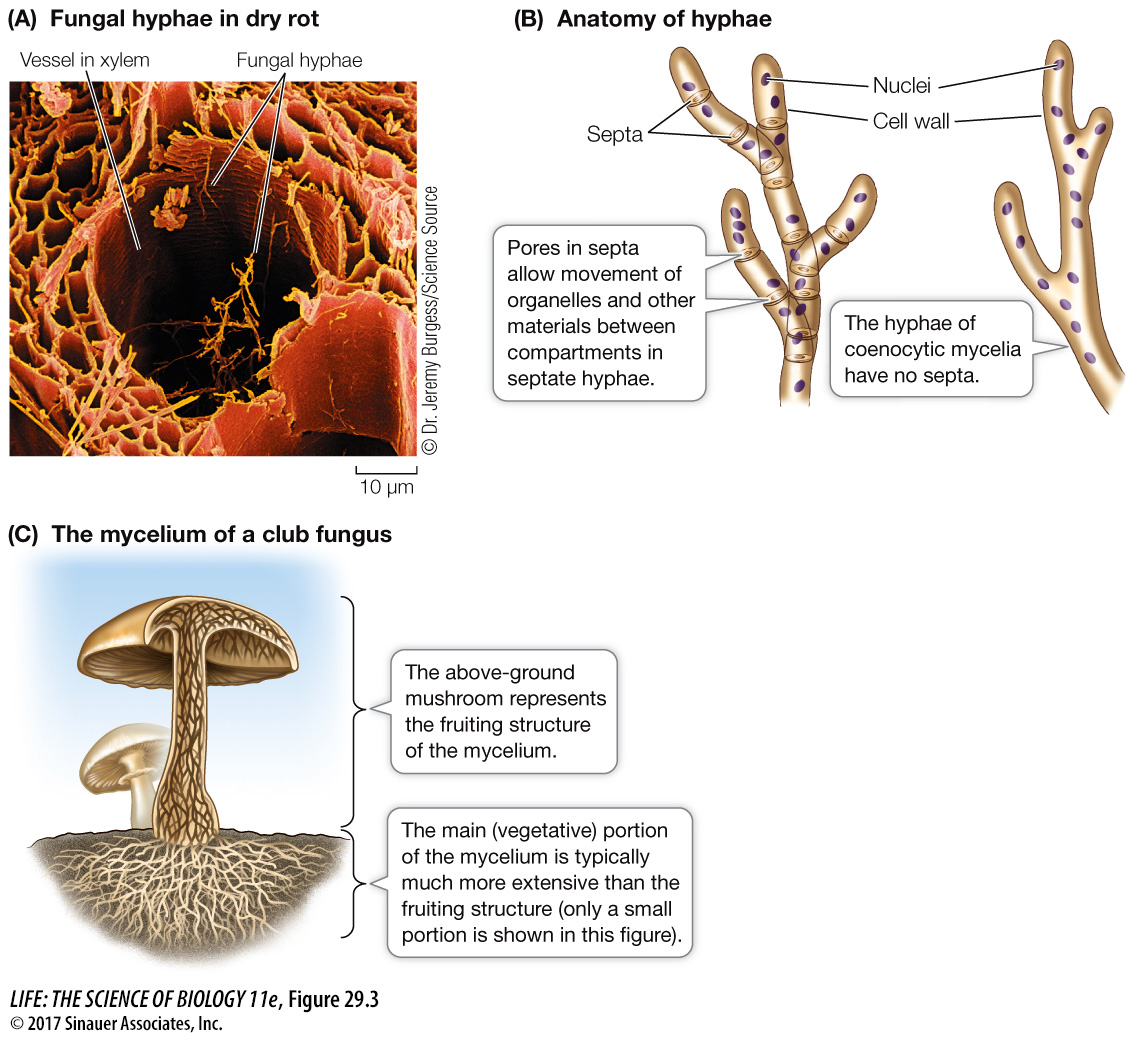Multicellular fungi use hyphae to absorb nutrients
The body of a multicellular fungus is called a mycelium (plural mycelia). A mycelium is composed of a branching mass of individual tubular filaments called hyphae (singular hypha; Figure 29.3A), in which absorption of nutrients takes place primarily at each tip. The cell walls of the hyphae are greatly strengthened by microscopic fibrils of chitin. In some species of fungi, the hyphae are subdivided into cell-like compartments by incomplete cross-walls called septa (singular septum). These subdivided hyphae are referred to as septate. Septa do not completely close off compartments in the hyphae. Pores at the centers of the septa allow cytoplasm and organelles—sometimes even nuclei—to move in a controlled way between compartments (Figure 29.3B). In other species of fungi, the hyphae lack septa but may contain hundreds of nuclei. These multinucleate, undivided hyphae are referred to as coenocytic. The coenocytic condition results from repeated nuclear divisions without cytokinesis.

Figure 29.3 Mycelia Are Made Up of Hyphae (A) The minute individual hyphae of fungal mycelia can penetrate small spaces. In this artificially colored micrograph, hyphae (yellow structures) of a dry-rot fungus are penetrating the xylem tissues of a log. (B) The hyphae of septate fungal species are divided into organelle-containing compartments by porous septa. The hyphae of coenocytic fungal species have no septa. (C) The fruiting structure of a club fungus is short-lived, but the filamentous, nutrient-absorbing mycelium can be long-lived and cover large areas.
Certain modified hyphae, called rhizoids, anchor some fungi to their substrate (i.e., the dead organism or other matter on which they grow). These rhizoids are not homologous to the rhizoids of plants, and they are not specialized to absorb nutrients and water.
Fungi can grow very rapidly when conditions are favorable. In some species, the total hyphal growth of a fungal mycelium (not the growth of an individual hypha) may exceed 1 kilometer a day! The hyphae may be widely dispersed to forage for nutrients over a large area, or they may clump together in a cottony mass to exploit a rich nutrient source. The familiar mushrooms you may notice growing in moist areas are spore-producing fruiting structures (Figure 29.3C). In the fungal species that produce these structures, the mycelial mass is often far larger than the visible mushroom. The mycelium of one individual fungus discovered in Oregon covers almost 900 hectares underground and weighs considerably more than a blue whale (the largest animal). Aboveground, this individual is evident only as isolated clumps of mushrooms.
